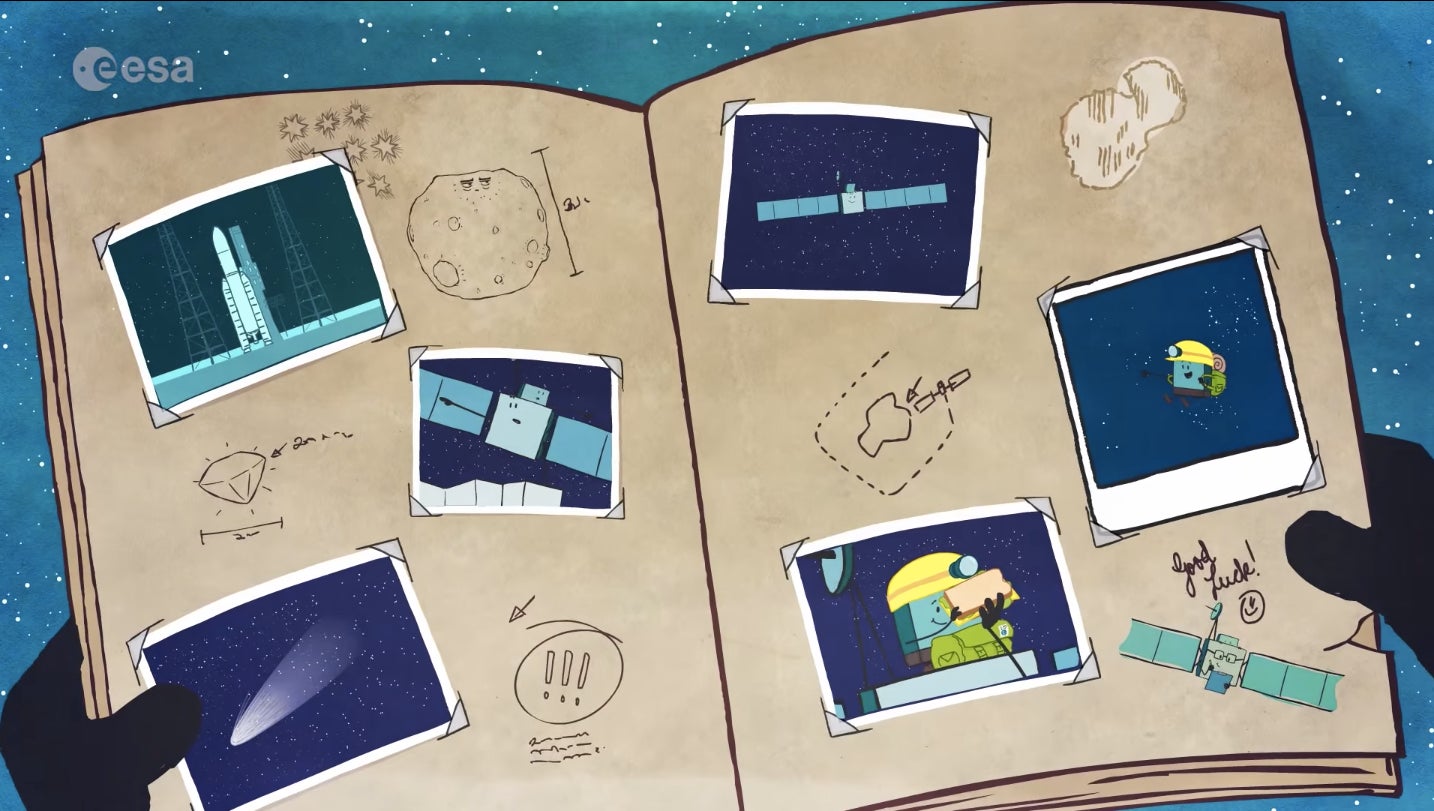The story of Philae, the little robot that flew across the solar system to land on a comet
Only two months ago, scientists at the European Space Agency had given up all hope of finding Philae, a robot probe that they had lost track of after it landed on a comet two years ago. But on Sept. 5, after giving it up for dead, they announced that they had found it, wedged in between some rocks. This is Philae’s story.


Only two months ago, scientists at the European Space Agency had given up all hope of finding Philae, a robot probe that they had lost track of after it landed on a comet two years ago. But on Sept. 5, after giving it up for dead, they announced that they had found it, wedged in between some rocks. This is Philae’s story.
***
Philae’s life began in 1993 on a piece of paper. He was designed as a lander, to be attached to a satellite, Rosetta, headed for the far-away comet known as 46P/Wirtanen. So far away, in fact, that it would take eight years to get there.
Rosetta and Philae were built with bodies that could withstand the tough life ahead. They would spend the years in space being bombarded with radiation that could destroy electronics, and with dust particles traveling at incredible speeds that could punch holes through solid metal. They carried scientific instruments and high-resolution cameras. They had tiny rockets to adjust their course, and a little bit of fuel to power them.

Their mission was to understand what comets are made of. The scientists hoped that knowing more about comets would tell us more about how the solar system formed billions of years ago. For instance, they thought Earth’s water might originally have come from comets. Rosetta’s instruments would test water vapor coming off comet 46P to see if it was like the water on Earth.
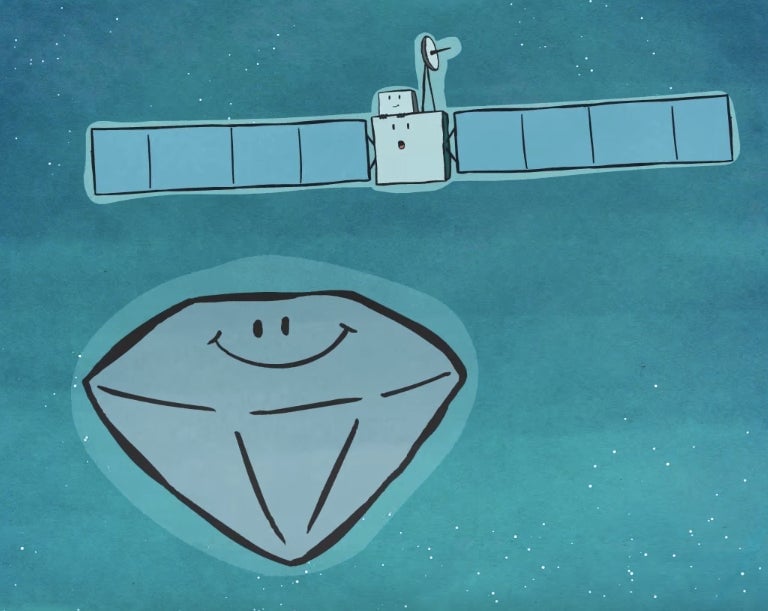
Rosetta and Philae would explore the comet together, but each in a different way. Rosetta would circle around it, analyzing the dust and gases it could capture. Philae would land on the comet itself—the first time a human-made machine had ever done so.
To get up into space, they would be launched on a rocket—an Ariane 5, which had carried many satellites into orbit before. They were scheduled to launch in 2003. But in 2002, an Ariane 5 exploded, and no more could be launched until the scientists and engineers had figured out why. Rosetta and Philae wouldn’t be able to get on a new Ariane until 2004.
Because comets travel so fast and far away from the sun, if you miss your launch date, you can’t easily reach the one you originally aimed for. So the mission had to find a new target. The scientists chose comet 67P/Churyumov-Gerasimenko, where they would arrive in 2014.
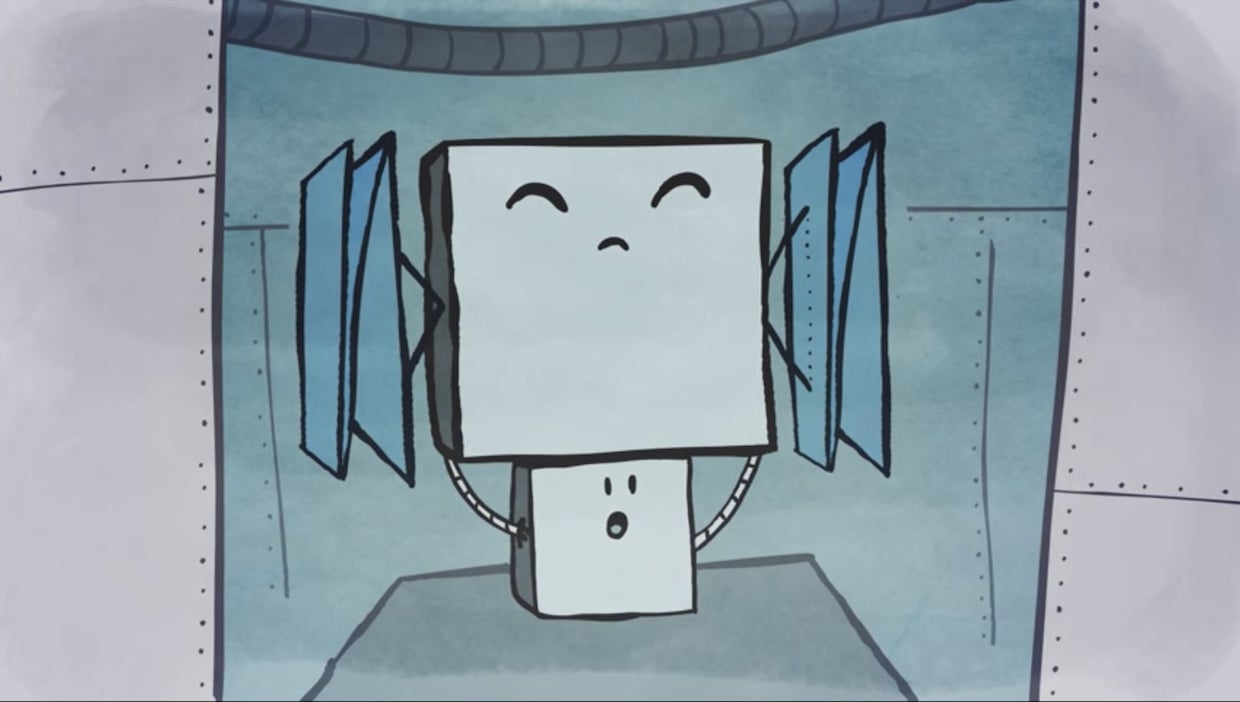
The launch was terrifying. Everything shook violently and the sound was deafening. Then came the boring part, 10 years of traveling through empty space, which they both spent mostly sleeping. Every so often, they were woken up by their masters on Earth, who would ask Rosetta to take a few pictures of odd looking objects, and then swiftly put them back to sleep.
Finally, in 2014, the duo got close to comet 67P. No one knew what it would look like. Philae couldn’t control himself and annoyed Rosetta constantly. “Are we there yet?” he asked, “ARE WE THERE YET?”
When they arrived, they found comet 67P had the most unusual shape. It looked, from some angles, like a rubber duck, but a rubber duck 4km (2.5 miles) wide.
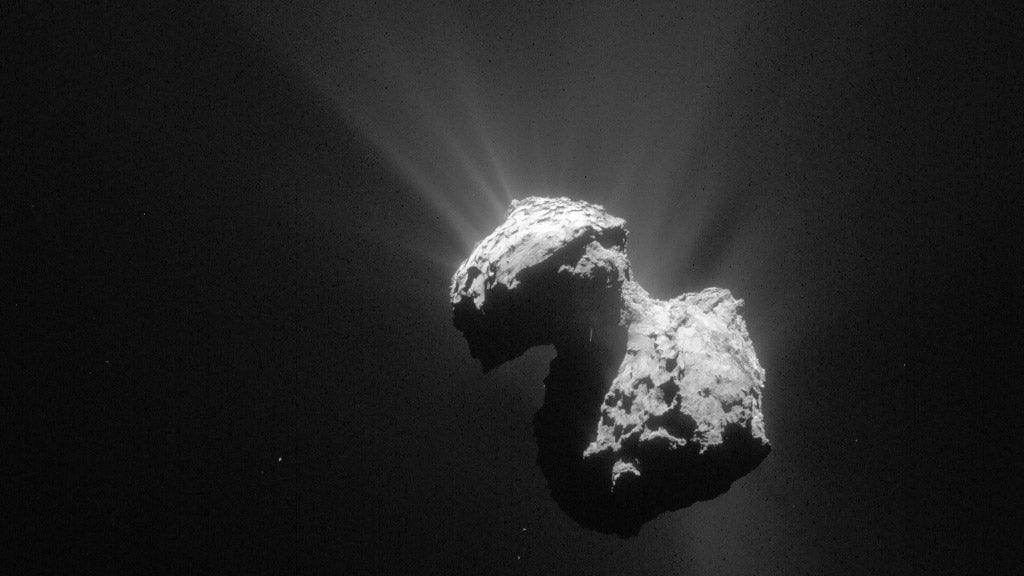
The most exciting day in Philae’s life was Sep. 15, 2014. It was a few weeks after Rosetta and he had started circling the duck-shaped comet. On that day, Philae’s landing site was selected. He would land on the “head of the duck.”
Philae somehow managed to stay quiet for the two months till landing day. In between, Rosetta kept telling him about the things she was learning and transmitting back to Earth. Philae wasn’t interested. All he cared about was landing.
On Nov. 12, 2014, Philae detached from Rosetta and took a leap of faith. Then all hell broke loose.
Philae landed bang on target, but, like jumping on a bouncy castle, was flung back to space. By the time he came to standstill, he had lodged himself in a corner somewhere at an awkward angle. Worse still, his human masters had no idea where he was and he had no way to tell them.
At that moment, the where didn’t matter. His mission was to do science, and away from Rosetta, his battery would only give him 60 hours of life. So he got to work: hammering, drilling, sampling rocks, and taking lots of images.
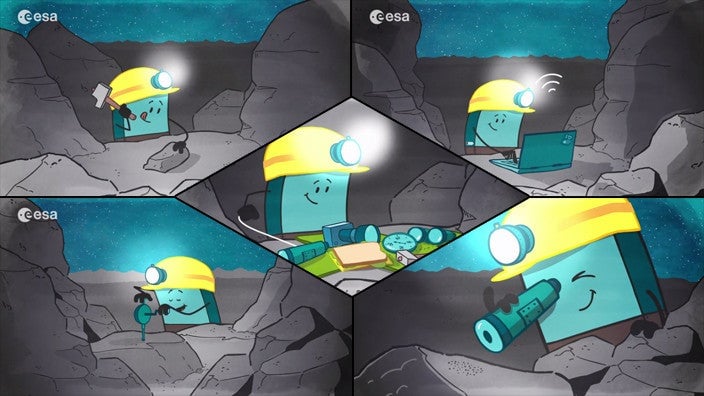
Later, analyzing the data Philae sent, scientists would learn that the comet was soft and fluffy, like ice cream. And, even more exciting, it contained chemicals that were essential building blocks of life. If comets like 67P had crashed on Earth long ago, they might have seeded it with the materials that allowed life to form.
Then Philae’s battery ran down. And so he went into hibernation.
Unbeknownst to him, his human masters back on Earth were trying everything they could to locate him. If they only knew where he had ended up, they could have tried to move Rosetta’s orbit, so that she would have a direct connection with Philae. Rosetta took a ton of pictures of the comet, looking for Philae, but he didn’t show up in any of them.
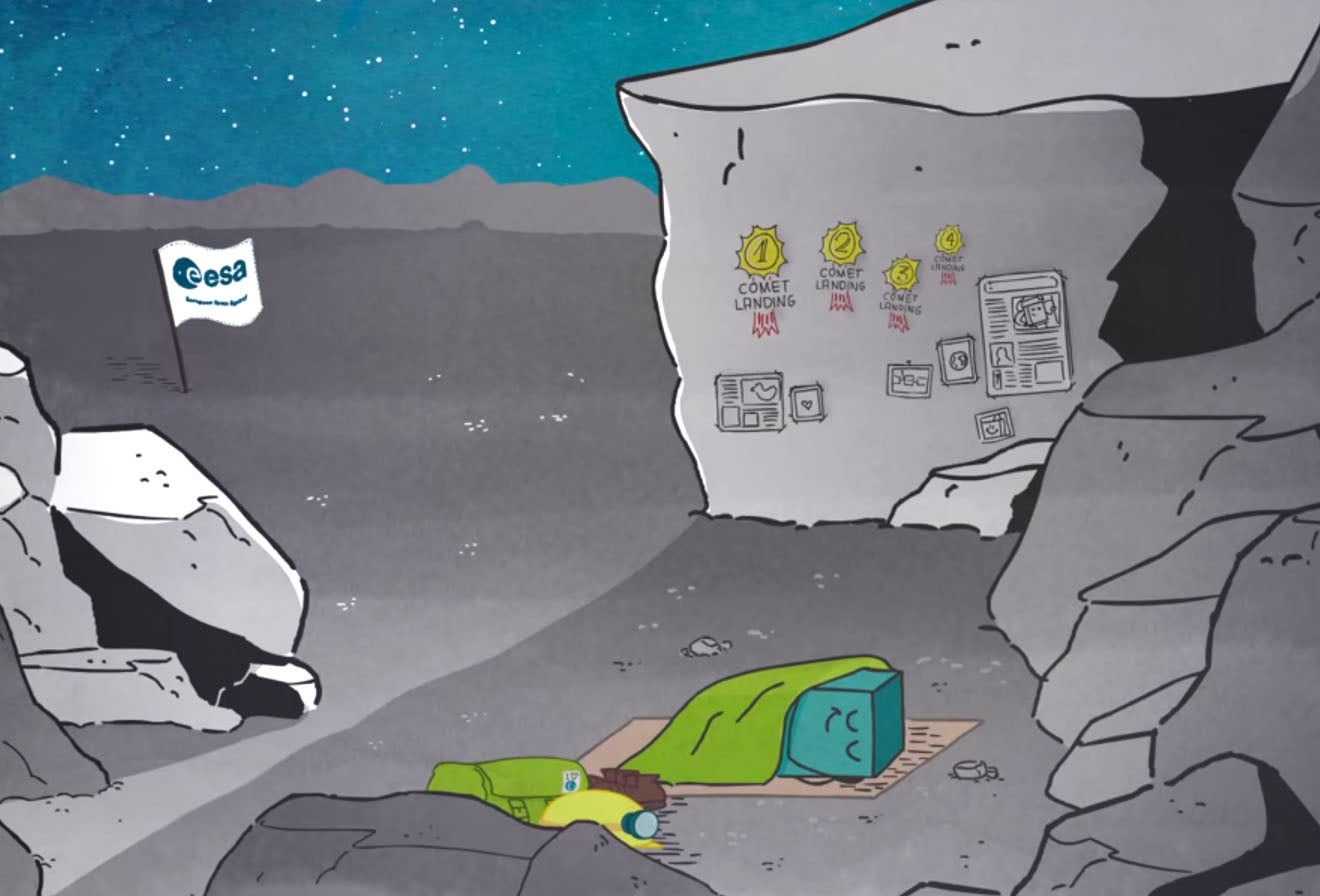
Philae had solar cells on him, which meant that if he got enough sunlight, he would be able to power back up again. But maybe he was in shadow too much of the time. For whatever reason, he didn’t awake again until till June 13, 2015. That day, for a glorious 85 seconds, Philae’s voice was heard.
He told Mission Control his body had taken a battering but he was OK. But before he could say more, the connection broke and couldn’t be established again.
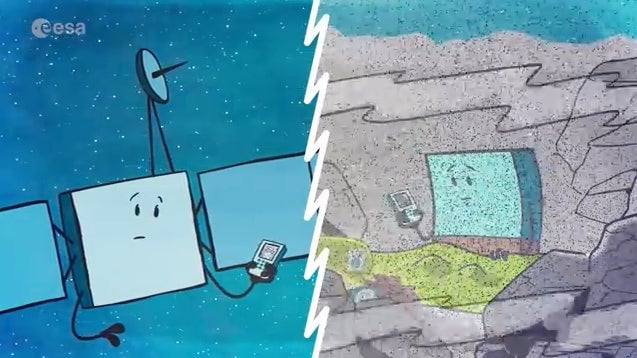
Another 13 months went by. Finally, on July 27 this year, scientists decided it was time to give up. Comet 67P had traveled so far from the Sun that Rosetta’s own solar cells could no longer draw enough power to communicate with Philae. They decided to switch off the instrument on Rosetta that was dedicated to searching for radio signals from him.
But, yesterday, on Sept. 5, they made an unexpected discovery. Rosetta still had enough power to take pictures of the comet, and she had carried on doing that, sending them back to Earth. One of the scientists was looking at the pictures when he spotted an odd-looking shape.
It was Philae, lying wedged in between some rocks on 67P.
Philae might still be able to function. But he probably doesn’t have enough power to say anything. And even if he did, Rosetta wouldn’t have much power to listen to those signals.
Still, the data Philae sent back will keep his human masters busy for years. His mission will go into the history books. And as for the rest of us, now that we’ve had a final look at him, we can all remember Philae as the robot who was the first to land on a comet.
